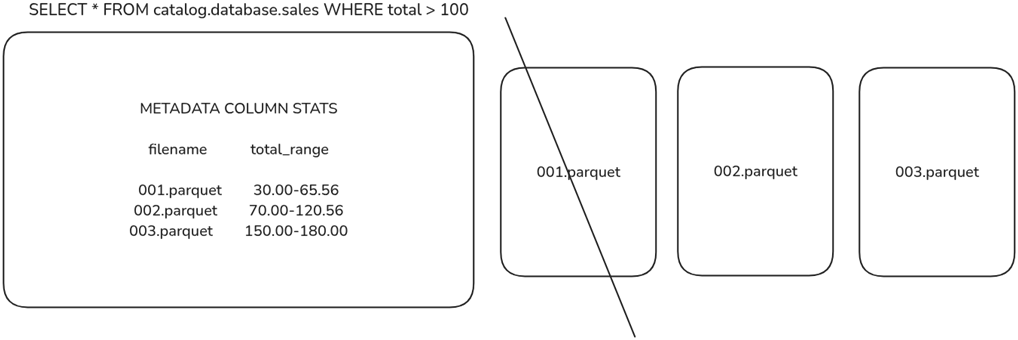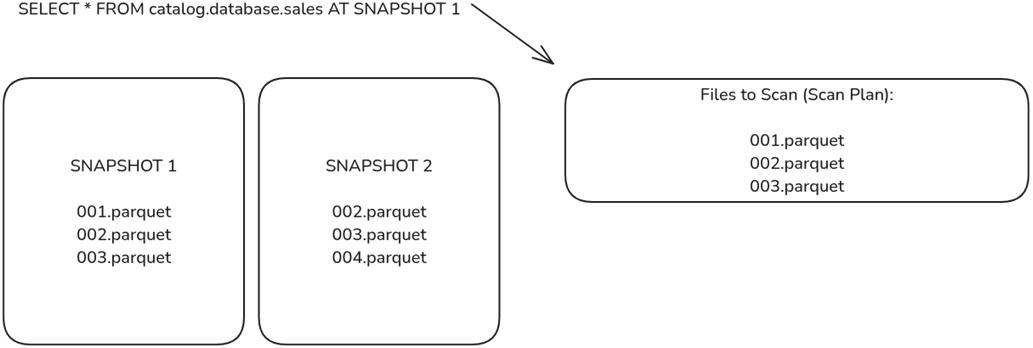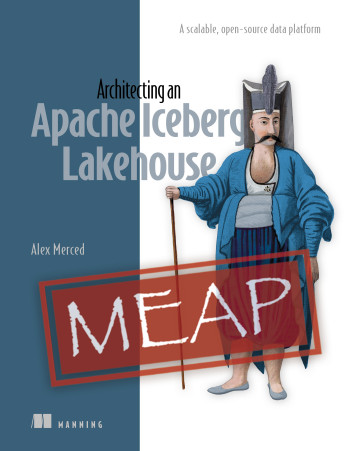1 The world of the Apache Iceberg Lakehouse
Modern data architecture has evolved through OLTP databases, enterprise and cloud data warehouses, and Hadoop-era data lakes, each trading off cost, performance, flexibility, and governance. Warehouses brought fast analytics but at high cost and rigidity; lakes offered cheap, scalable storage but suffered from slow queries, weak consistency, and governance gaps that often devolved into data swamps. The data lakehouse emerged to reconcile these tensions—delivering warehouse-like performance and usability on open, low-cost lake storage—and Apache Iceberg sits at the center of this shift by standardizing how analytics tables are defined and managed across engines.
Apache Iceberg is an open, vendor-agnostic table format that makes files in distributed storage behave like robust database tables. It introduces a layered metadata model (table, snapshot, and file-level manifests) that powers fast planning, pruning, and concurrent reads/writes with full ACID guarantees. Iceberg enables seamless schema and partition evolution, hidden partitioning to reduce accidental full scans, and time travel for auditing and recovery—while remaining interoperable across engines like Spark, Flink, Trino, Dremio, and warehouses, and governed through open catalogs. Compared with earlier lake approaches and alternative formats, Iceberg emphasizes flexibility, ecosystem breadth, and operational simplicity that scale to very large datasets.
An Iceberg lakehouse is built as a modular system: low-cost object storage for data and metadata; ingestion for batch and streaming; a catalog as the single source of truth for table discovery and governance; a federation layer to model, unify, and accelerate data; and a consumption layer that serves BI, AI/ML, operational apps, and APIs. This design consolidates analytics on a canonical copy of data, improves consistency across teams, cuts duplication and ETL, and avoids vendor lock-in. While adopting Iceberg requires integrating engines and catalogs and shifting from raw files to managed tables, it enables a scalable, high-performance, and open foundation for analytics and AI—exactly the focus of the book’s hands-on guidance for architecting the ideal Iceberg lakehouse.
The evolution of data platforms from on-prem warehouses to data lakehouses.

The role of the table format in data lakehouses.

The anatomy of a lakehouse table, metadata files, and data files.

The structure and flow of an Apache Iceberg table read and write operation.

Engines use metadata statistics to eliminate data files from being scanned for faster queries.

Engines can scan older snapshots, which will provide a different list of files to scan, enabling scanning older versions of the data.

The components of a complete data lakehouse implementation

Summary
- Data lakehouse architecture combines the scalability and cost-efficiency of data lakes with the performance, ease of use, and structure of data warehouses, solving key challenges in governance, query performance, and cost management.
- Apache Iceberg is a modern table format that enables high-performance analytics, schema evolution, ACID transactions, and metadata scalability. It transforms data lakes into structured, mutable, governed storage platforms.
- Iceberg eliminates significant pain points of OLTP databases, enterprise data warehouses, and Hadoop-based data lakes, including high costs, rigid schemas, slow queries, and inconsistent data governance.
- With features like time travel, partition evolution, and hidden partitioning, Iceberg reduces storage costs, simplifies ETL, and optimizes compute resources, making data analytics more efficient.
- Iceberg integrates with query engines (Trino, Dremio, Snowflake), processing frameworks (Spark, Flink), and open lakehouse catalogs (Nessie, Polaris, Gravitino), enabling modular, vendor-agnostic architectures.
- The Apache Iceberg Lakehouse has five key components: storage, ingestion, catalog, federation, and consumption.
 Architecting an Apache Iceberg Lakehouse ebook for free
Architecting an Apache Iceberg Lakehouse ebook for free